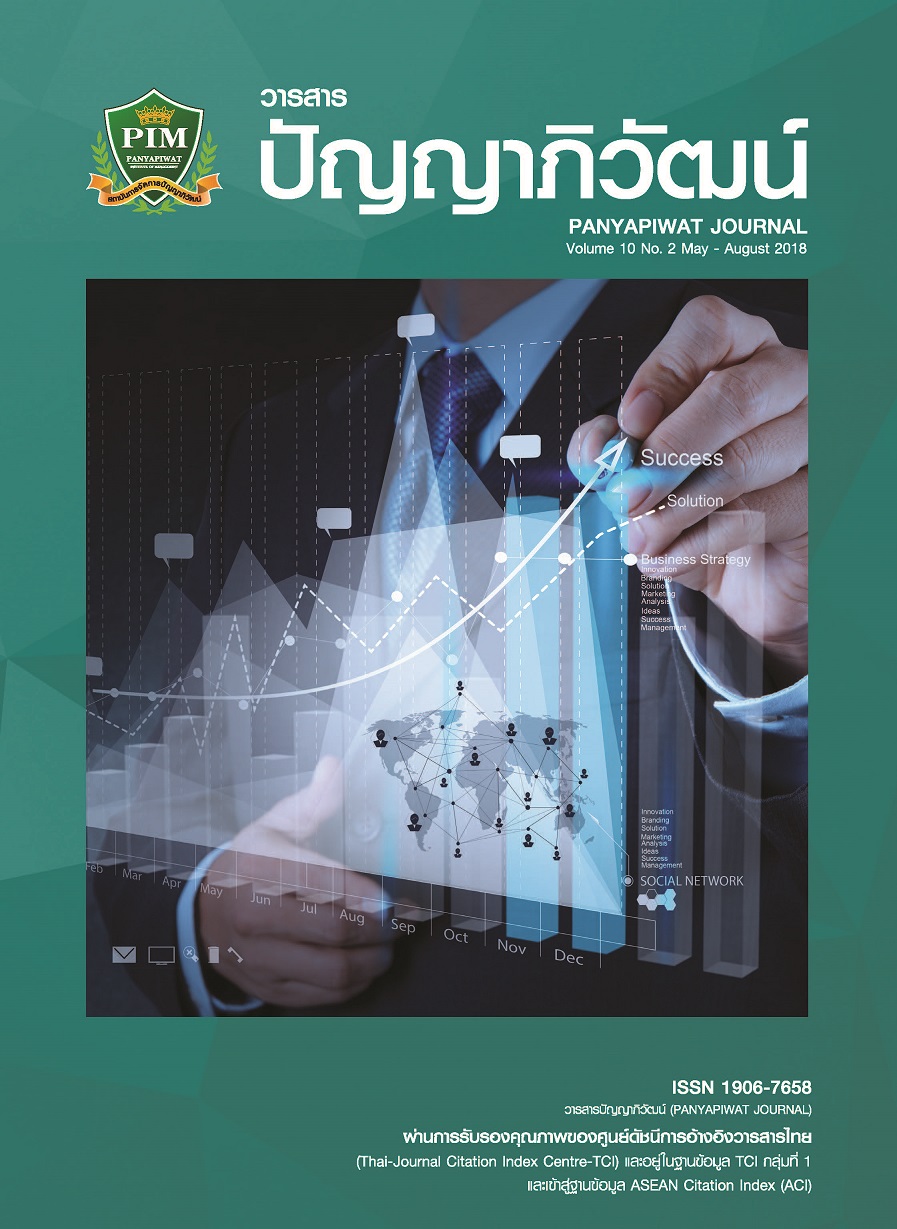WOMEN’S HEALTH PREPAREDNESS BEFORE ENTERING THE AGEING
Main Article Content
Abstract
The purpose of this quantitative study was to examine the situation of women’s health preparedness before entering the Ageing. Data derived from the “National Survey of Elderly population in Thailand, 2014” by the National Statistical Office. The target population was 9,344 respondents aged 50 years old who preferred to answer the questionnaire by themselves. The general characteristics and health preparedness of samples will be analyzed and explained by descriptive statistics.
The results showed that the average age of samples was 55 years old with 82.30% of marital status. Most of them were Buddhist (96.10%) with the education level at primary or lower (76.01%). On the average, the samples had three children. In term of the family relationships, it could be divided into three patterns. Firstly, 38.95 percent of samples had child visitation at least once a year. Secondly, 38.45 percent of them have daily contacted each other by phone. Finally, there was no contact via the internet which accounted for 94.11%. Moreover, the average income per year was 30,000-59,999 Baht (32.62%). Most of them had the working income. 77.30% of samples were satisfied with their financial situation and did not want to work after retirement (49.22%). 62.55 percent of samples were healthy and 51.74 percent had the annual health check from the government service sectors.
In term of the health preparedness, we found that the most of health preparedness that samples had been done well was nonsmoking. However, 15.55 percent of samples had no exercise, 28.18 percent of them drink water less than 8 glasses a day and 26.16 percent did not eat fruits and vegetables. It could be anticipated from these results that those samples possibly had no time to do exercise especially people with low income those work hardly and hesitate to care for their health. Therefore, Women who are not prepared should be encouraged to receive health promotion and be alerted or campaigned for well-being.
Article Details
I and co-author(s) certify that articles of this proposal had not yet been published and is not in the process of publication in journals or other published sources. I and co-author accept the rules of the manuscript consideration. Both agree that the editors have the right to consider and make recommendations to the appropriate source. With this rights offering articles that have been published to Panyapiwat Institute of Management. If there is a claim of copyright infringement on the part of the text or graphics that appear in the article. I and co-author(s) agree on sole responsibility.
References
Berkman, B. & Harootyan, L. (2003). Social Work and Health Care in Aging Society: Education, Policy, Practice, and Research. New York: Springer.
Boonyakawee, C. (2007). The Functional Disability of the Elderly in TambonKrabi-noi Muang District, Krabi Province, Thailand. Public Health Thesis. College of Public Health Science, Chulalongkorn University. [in Thai]
Bootsma-van der Wiel, A., de Craen, A. J., Exel, E. V., Macfarlane, P. W., Gussekloo, J. & Westendorp, R. (2005). Association between chronic diseases and disability in elderly subjects with low and high income: the Leiden 85-plus study. European Journal of Public Health, 15(5), 494-497.
Casado, R. L. (2006). Gender different in association between disability and mortality in the elderly. Doctoral Thesis, Health and Life Sciences Faculty, Pompeu University.
Institute of Geriatric Medicine. (2010). Elderly Situation Report 2010. Bangkok. [in Thai]
Jagger, C., Mathews, R. J., Mathews, F. E. & Spier, N. A. (2006). Cohort difference in disease and disability in young-old: finding from MRC Cognitive Function and Aging Study (MRC-CFAS). BMC Public Health, 7, 156-167.
Jitapunkul, S. (1997). The health survey of older persons. In the health survey of population from the second of physical examination (1996-1997). (p.83-117). Bangkok: Strategy and Planning Division Ministry of Public Health. [in Thai]
Jitapunkul, S. (2000). Chronic Disease and Disability Proliferation in Thai Population: Assumptions Based on Research Data in the Elderly Population. Journal of Gerontology and Geriatric Medicine, 3(2), 42-49. [in Thai]
Krungkrai, N. (1997). Disability status among elderly living in central region of Thailand. The Master Degree in Faculty of Medicine, Chulalongkorn University. [in Thai]
Lima, M. G., Barros, M. B., Cesar, C. L., Goldbaum, M., Carandina, L. & Ciconelli, R. M. (2009). Impact of Chronic Disease on Quality of Life Among the Elderly in the State of Sao Paulo, Brazil: A Population-Based Study. Pan Am J Public Health, 25(4), 314-321.
Murtagh, K. N., Helen, M. A. & Hubert, H. B. (2004). Gender Differences in Physical Disability Among an Elderly Cohort. American Journal of Public Health, 94, 1406-1411.
National Statistical Office. (2014). Thai Elderly Mental Health Report. Bangkok. [in Thai].
Promotion and Elderly Care Ministry of Social Development and Human Security. (2013). Report of the Study on Monitoring and Evaluation Project of the National Elderly Plan No. 2 (2011-2021) Phase 2 (2007-2011). College of Population Studies, Chulalongkorn University. [in Thai]
Songsraboon, R. (2014). Model of Health Care Service Affecting the Satisfaction of Patient in Internal Medicine Department Selected Private Hospitals. Sipakorn University Journal, 34(3), 151-170. [in Thai]
Stuck, A. E., Walthert, J. M., Nicholaus, T., Bula, C. J., Hohmann, C. & Beck, J. C. (1999). Risk for functional status decline in community-living elderly people: A systematic review. SocSci Med, 48(4), 445-69.
Suwannarooji, D. (2013). Determinant Factors of Disability Between Female and Male Elderly in Thailand. The degree of doctor of demography, College of Population Studies, Chulalongkorn University. [in Thai]
Udry, J. R. (1994). The Nature of Gender. Demography, 31(4), 561-573.
Yotsena, B (2016).Quality of Population Acceptance of Globalization and Value of Older person. The degree of doctor of demography, College of Population Studies, Chulalongkorn University. [in Thai]
Yount, K. M. & Agree, E. M. (2005). Differences in Disability among Older Women and Men in Egypt and Tunisia. Demography, 42(1), 169-87.


